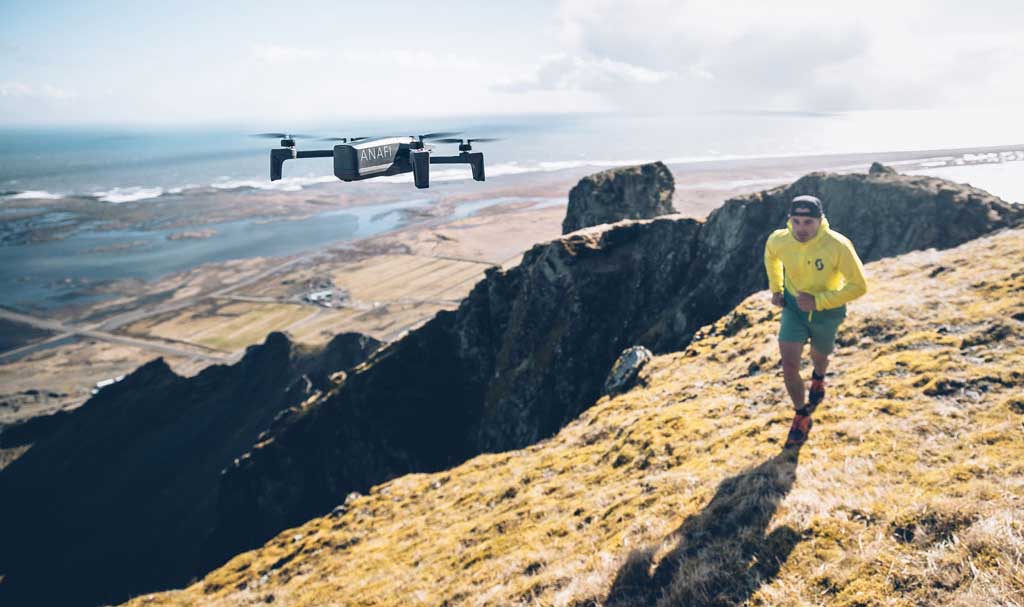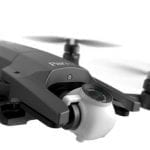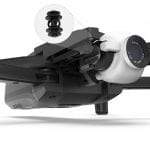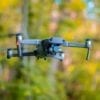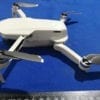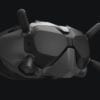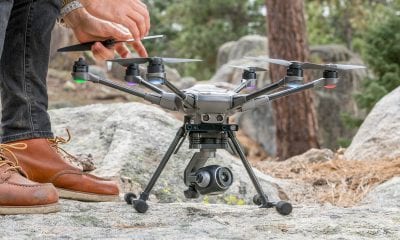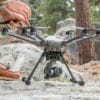Parrot Anafi Review: Good Drone with No-Goes
The Parrot Anafi pursues a similar concept as DJI Mavic 2 and Mavic Air, being a foldable drones and therefore very easy to transport. There is also a lot of technology in the compact drone and it offers some cool cineshots. But there is also criticism!
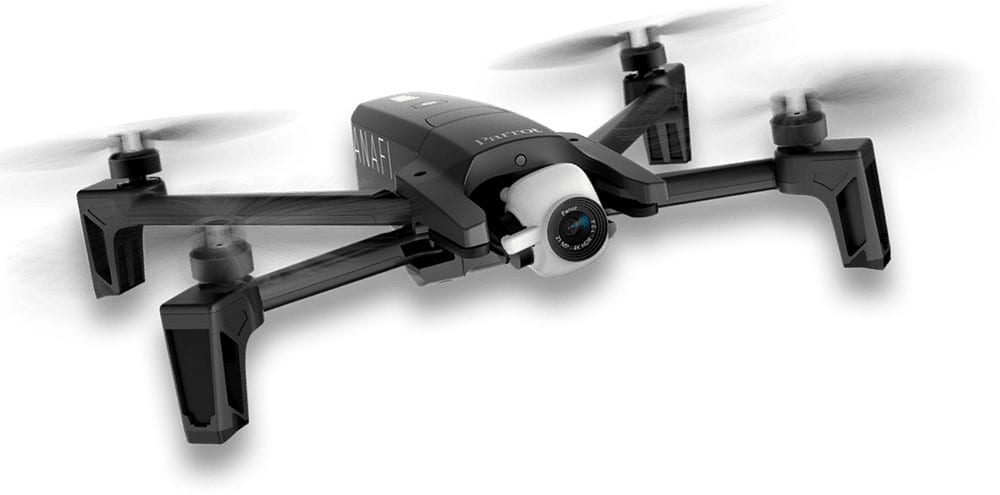
The Verdict: Parrot Anafi
The Anafi impresses with high stability and robustness. A fall from about two and a half metres on stone floor, the drone has survived to a few scratches and works flawlessly – of course, this is no guarantee that it is always so!
We like the fact that the drone has been built with a very compact design, simply slipping into your backpack for easy transport.
The Anafi comes with a 4K HDR camera boasting impressive video and photo shooting capabilities with a 180° tilt gimbal and up to 2.8X lossless zoom – we found that the quality of output could have been better though.
To make the Anafi ready for flight, all you have to do is fold out the outriggers. This takes a maximum of four seconds – and it is folded in three seconds.
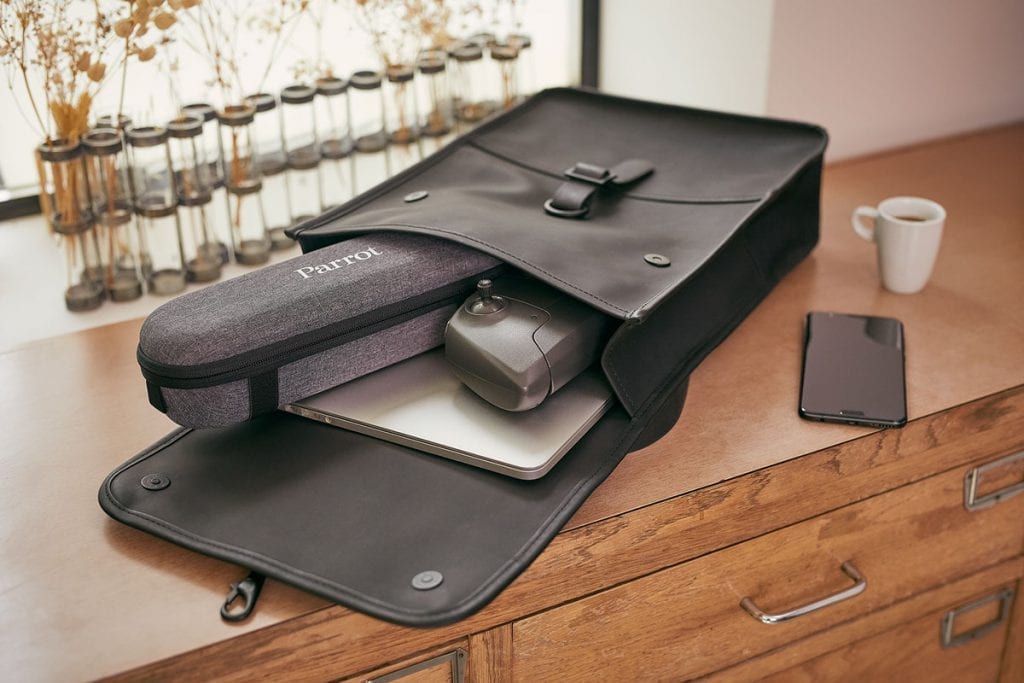
The delivery includes a fairly sturdy transport case, in which you can stow the drone and transport safely. The Skycontroller 3 is foldable, but has no place in the case.
The positive thing is that the Freeflight 6 app offers many options and some cool flight modes are on board.
However two of them can only be used via in-app purchases, and in addition to this no power supply is included. This means that you either have to rely on your smartphone power supply or buy one – adding to the cost of the drone.
Charging of the drones batteries takes around four hours, resulting in a flight time of up to 25 minutes.
An alternative is the DJI Mavic Air, which can also record 4K videos, is compact and foldable. The drone has a true, mechanical 3-axis stabilization and all flight modes are factory-integrated. In addition, there is an environment detection in three directions by several sensors.
Size & Weight
Parrot uses with its Anafi various carbon components, which makes the drone particularly light, weighing in at just 320 grams on the scales.
When folded, the drone measures approximately 245 x 65 x 65 millimeters, and when unfolded, the drone is now 185 millimeters long, still 65 millimeters high and 240 millimeters wide.
In our test, drone also proved very robust – a fall from about 2.5 metres resulted in the drone surviving with just a few scratches!
Speed
Parrot indicates the maximum horizontal speed at 55 km/h. In the test, we were able to regularly accelerate to over 60 km/h in Sport mode.
Able to take off vertically at a speed of 14 km/h, the drone also has a movie mode in which the drone flies slowly to allow the smoothest possible camera movements.
We noticed that the drone is moving extremely slowly with the default settings in both modes – especially on its own axis. Luckily you can adjust the speed (more on this under Controller & App)
Flight Time & Load Time
We can confirm the maximum flight time of 25 minutes specified by Parrot. With constant video recording with different camera shots, some maneuvers and high-speed flights, the battery kept in the test regularly between 21 and 25 minutes.
Incidentally, the battery has a capacity of 2700 mAh and is charged via USB-C. Unfortunately there is no power supply, so you have to buy this extra. Or you use a power adapter of your smartphone or tablet. You can also charge it via the USB port of your PC.
In the test we have a conventional smartphone power supply with 5V / 2.5A. It takes about four hours until the battery is fully charged – that’s long!
The battery has a maximum charging power of 24 watts, you could load the battery faster with an appropriate power supply, but you have to expect about two and a half hours.
Here it would be better if Parrot enclose its own power supply or at least would offer for sale, which is tailored to their own batteries.
Range
The connection between controller and drone is via WLAN with 2.4 or 5.8 GHz and allows a maximum range of four kilometres.
This is of course only optimal conditions and a trouble-free connection possible. In practice however, the connection was already poor after a distance of 150 metres.
Additionally, we experienced picture dropouts at this distance, which we admit was also because of buildings that could disturb the signal.
Otherwise, the connection is very stable and the Anafi responds quickly to commands.
Screenshots from Parrot’s own website indicate the behaviour of the drone under different levels of wifi connectivity.
For positioning, the drone uses GPS and GLONASS for positioning.
Controller
The included Skycontroller 3 does not have its own display. It has a built-in, hinged mount for a smartphone, on which you need to install the app FreeFlight 6.
Controller and smartphone are connected via a USB cable. On the phone display, you can see the live image of the camera without any noteworthy delay in HD resolution.
The controller fits well in the hand, but is much bulkier than the DJI controller of a Mavic Air. At 386 grams, it is also a bit heavy.

Camera and Gimbal
The Parrot Anafi has a hybrid 3-axis gimbal to record still images and video.
Unlike the DJI drones, the gimbal is mechanically stabilized only in two axes, the third axis is digitally stabilized.
Videos capture the built-in camera with a 1/2.4-inch CMOS sensor in 4K at a maximum of 30 frames per second.
Full HD allows up to 60 frames per second. With the camera, you can zoom up to 2.8x lossless with Full HD recordings, with 4K videos up to 1.4x. The camera can be tilted vertically by 180 degrees, so you can film up, but not swing sideways.
The camera takes photos with a maximum of 21 megapixels and saves you JPEG or RAW format.
In the test, the camera shows little dynamic range and rather pale colors. The sharpness, however, is very high.
The app available for iOS and Android is self-explanatory and easy to use. It is particularly interesting that you can adjust the drone speed in the settings under “Control”.
For example, how much does the drone lean to build even more speed, or how fast does the Anafi tend to accelerate?
You can also set the rotation speed, which is much too slow at the factory. Under “Interface” you can select your preferred control mode. And under “Safety” you set the maximum height of 150 meters and distance of 2000 meters at 2.4 GHz (default).
Flight Modes
You have the option of selecting intelligent flight modes in the app.
These include, for example, Cameraman, Smartdronie or various CineShots. You can also record time-lapse and slow motion videos.
If you want to use the two known flight modes “Follow Me” and “Flight Plan”, you have to buy them via the in-app shop for $US1.49 – a trifling amount but to us, friends, that’s a no-go.
Considering the price tag of $US699, one would think all flight modes come included, such as with DJI drones.

